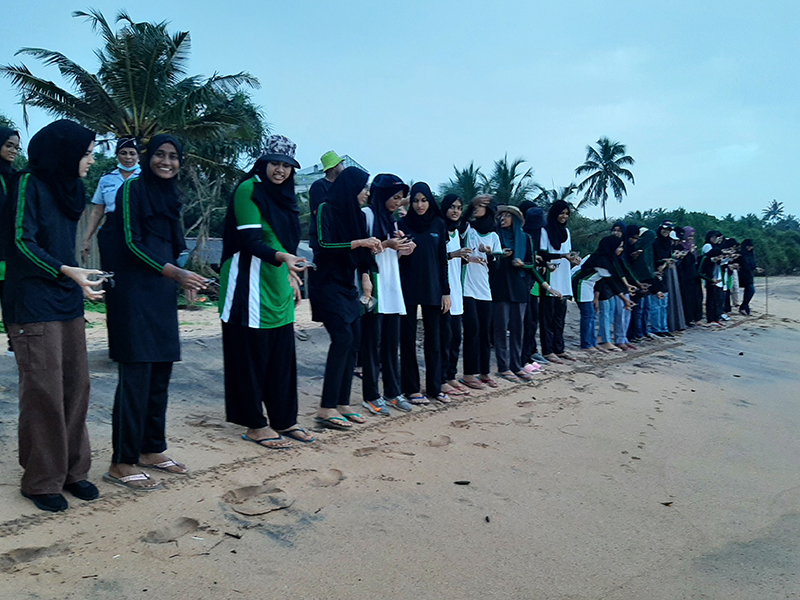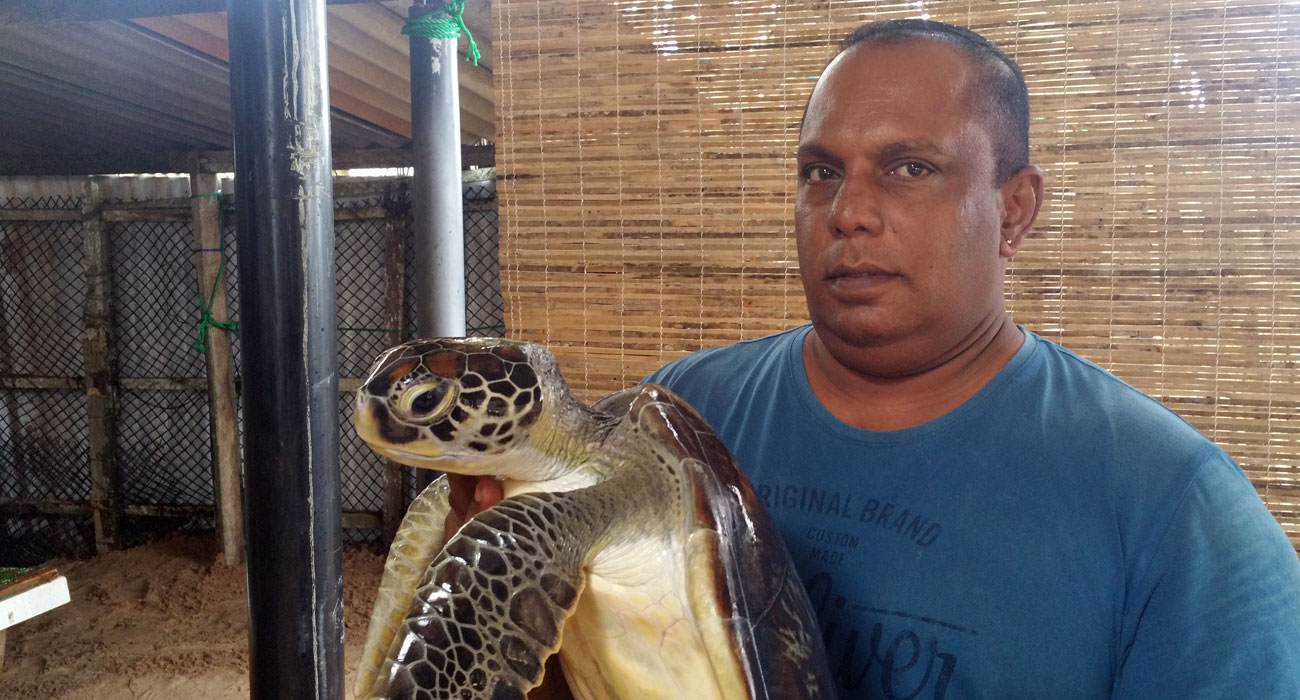Chelonia mydas (Linnaeus, 1758)

Distribution
These turtles are known to nest in Akurella, Mawella, Kosgoda, Rekawa, Ambalantota, Yala & Bundala of Sri Lanka. They are widely distributed in tropical & sub tropical regions especially around oceanic islands & along coasts with wide sandy beaches. Also they are seen in all oceans with primarily temperate waters. There is a huge population in Atlantic & Eastern Pacific oceans.
Breeding
The mating seasons vary between populations, taking place throughout the year. Individual female green turtles usually mate every 2-4 years. But there is an increase in January to March. Female turtles control mating; males cannot force females to mate. There is an increased survival among the hatchlings but only a few green turtle populations are known to undergo polyandry when mating.
After mating in the water, the females haul themselves onto the beach above the high tide line. Upon reaching a suitable nesting site, the gravid female digs a hole with her hind flippers and deposits a number of eggs in the nest & the number laid per litter depends on the age of the female. After laying eggs, the female covers the nest with sand and returns to the sea.
Eggs are soft shelled & spherical. Each nest contains 98-172 eggs measure 41.4-42.1mm. The hatchlings occur after 2 months of time. During a nesting season, one female can lay up to 11 nests. The eggs hatch during the night and the newly-emerged turtles instinctively head directly towards the water’s edge. After hatching, turtles in their first five years are known to spend a majority of their early life stages in convergence zones within the open ocean.
Human impact & dangers
These turtles’ populations are in danger because of several human practices. They are hunted for their flesh. Many turtles die as a result of being caught in fishermen’s nets and drowning. Their eggs are collected from nests and eaten as a delicacy. Pollution indirectly harms the turtle populations both on the population and the individual scale. Also, habitat loss occurs due to human development is a major reason for the loss of green turtle nesting beaches.
The most dangerous time in a turtle’s life, is the hatchlings make their way to the water. Various predators such as gulls and crabs pick off many hatchlings. A significant percentage of them never make it to the ocean.
Refference : Wild REACH








